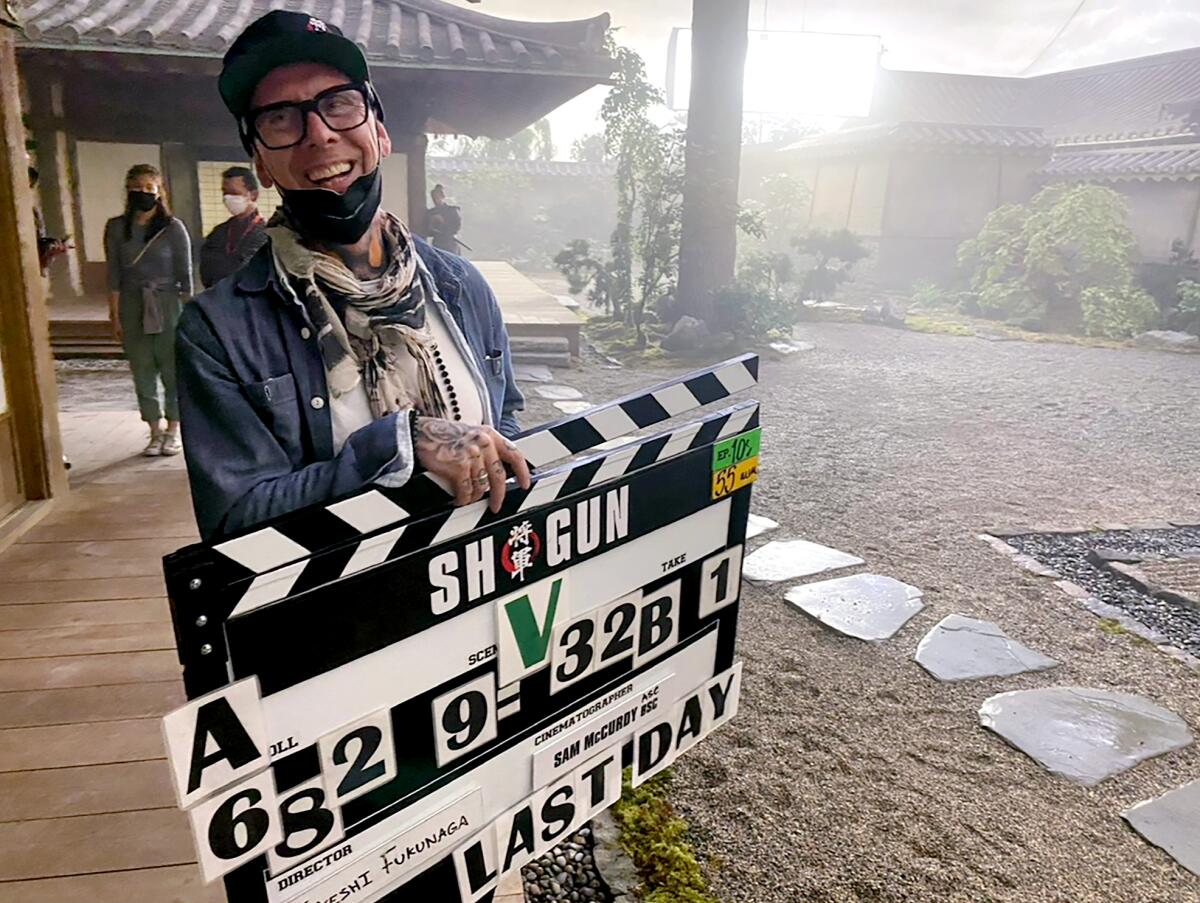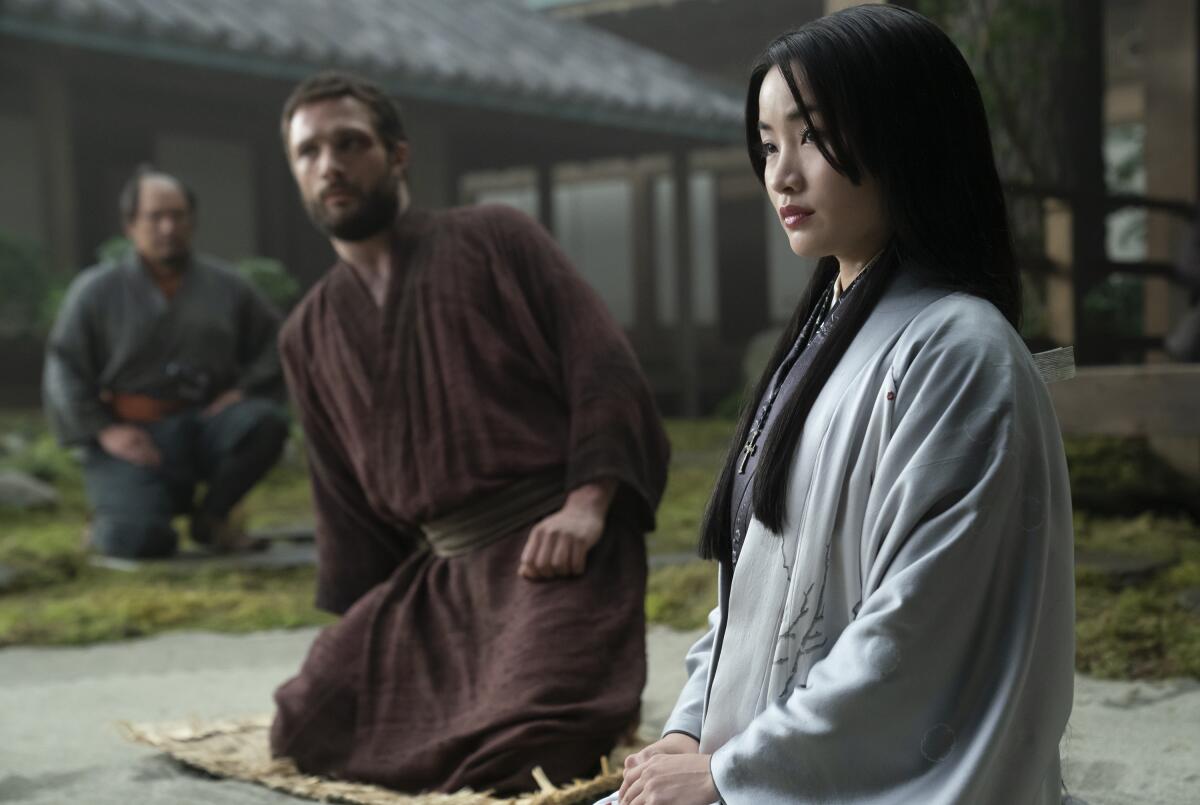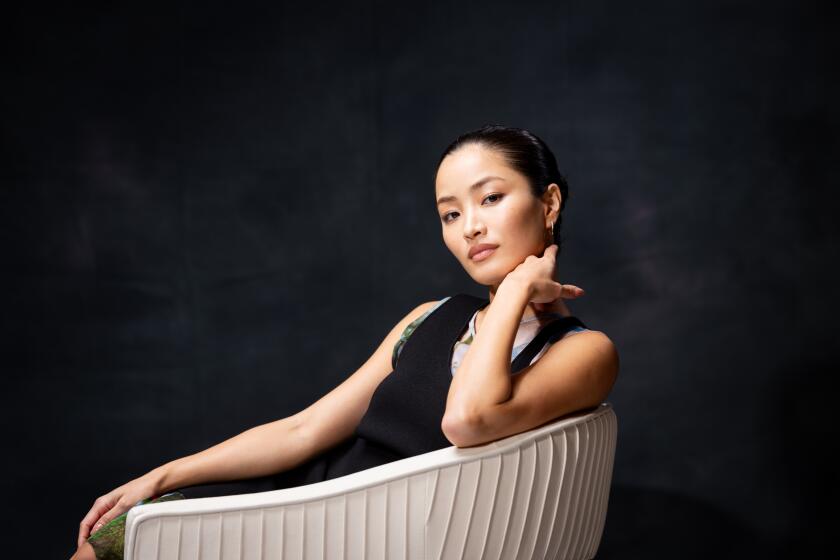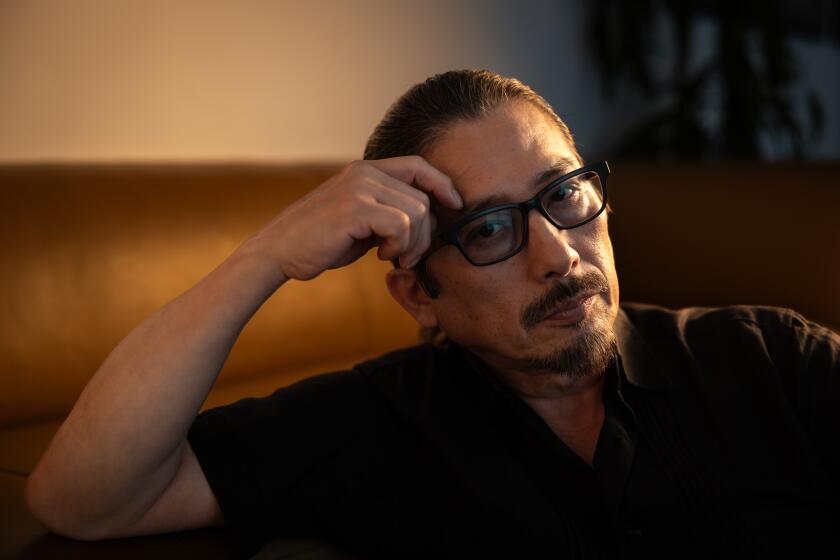How ‘Shōgun’ cinematographer Sam McCurdy helps create a visual portrait

- Share via
Cinematographer Sam McCurdy knew he was part of something special during his nearly year-long tenure on FX’s “Shōgun,” where he shot five episodes of the 10-part historical epic set in 1600s Japan. But the U.K. native noticed something different leading up to its premiere as the network rolled out one of its biggest campaigns to launch a show in recent history.
“I remember driving into Los Angeles from Altadena going over the canyon roads, and somewhere in the middle of Glendale there were posters for the show,” he says. “I was like, ‘Oh, they made it way out here. That’s really cool.’ And I remember seeing trailers at the cinema too. There was something that felt old-school about ‘Shōgun.’ It was more like an event.”
The sprawling reach paid off, both critically and among audiences, as the premiere broke FX domestic and international streaming records. When Emmy nominations were announced, the success continued as creators Justin Marks and Rachel Kondo told the L.A. Times’ Tracy Brown it was “surreal” for “Shōgun” to lead the way with 25 nominations, including nods for series, acting, production design, costume design, sound, editing and visual effects.
For the role, the actor had to learn traditional Japanese, how to walk in a kimono, how to kneel properly and even how to fight.
“We don’t do this for the awards, we do it because we love the work,” says McCurdy, who was nominated for the gripping, albeit harrowing episode “Crimson Sky,” in which one of the series’ more beloved characters dies. “But I will be eternally grateful to production designer Helen Jarvis and costume designer Carlos Rosario for putting a kind of quality in front of the camera that I hadn’t seen for years. It was breathtaking. The costumes, the set design, everything was just incredible to photograph every day.”
Production nestled in British Columbia connecting with the lush Canadian surroundings for exteriors, including an old cedar mill to fill in for the fishing village of Osaka, while Mammoth Studios in Burnaby was home to the ornate sets built for the palace quarters, ceremonial hall and samurai houses. Cinematographer Christopher Ross established the visual table in the first two episodes (the pilot “Anjin” earned him his own Emmy nom) and it was up to McCurdy to expand the language to support a magnetic story of civil unrest among five council regents ruling the country, with two of them — Toranaga (Hiroyuki Sanada) and Ishido (Takehiro Hira) — in a chess match for power.

McCurdy also illuminated a blooming relationship between a captured Englishman named John Blackthorne (Cosmo Jarvis) and an interpreter in Lady Toda Mariko (Anna Sawai), which peaks in Episode 4, “The Eightfold Fence.” Teaming with director Frederick E.O. Toye, the pair discussed a theme of romance. “That gave us a shorthand for the visual language that was gentler and softer, where the camera movement was always around them trying to bring them together,” notes McCurdy. Highlighting the dance were scenes of Blackthorne and Mariko conversing atop a rocky outcrop and later in a softly lit natural pool before eventually sharing a bed. The cinematographer composed shots with longer lenses and had characters share the frame to outline their affection. “I like to think we did it subtly enough for viewers to take it on as a wave of feeling as opposed to us being pragmatic with our rules,” he says.
However, the relationship comes to a halt when Mariko’s husband, Buntaro (Shinnosuke Abe), thought to have been killed, unexpectedly returns. “Episode 5 was the breakup and we go with more visceral, harder framing,” McCurdy says. A perfect example of the stylistic choice occurs during a tense dinner scene where Blackthorne attempts to outdrink Buntaro while sharing war stories. It leads to Buntaro showing off his archery skills by having Mariko stand outdoors in the pathway. The shots narrowly miss her as he aims for the garden beyond. “The camera movement becomes more rigid and pointed then,” McCurdy notes. “Instead of gliding into a closeup, we go to a closeup and stay or move around to change your perspective.”
For Episode 7, “A Stick of Time,” which sees Toranaga’s half-brother enter the fray, an almost monochromatic color palette was introduced with the entire episode devoid of sunlight. “If it wasn’t for the firelight, it is almost a black-and-white episode,” McCurdy says. “In prep, Justin [Marks] had noted that ‘a mist rolls into town,’ and when I spoke to him about it he said it was the prevailing mist that was going to take over for the rest of the episodes. So we wanted to embrace the British Columbia climate and dig into the mist, the rain, the dirt, the mud and everything else. That was like music to my ears.” The painterly aesthetic was helmed by Japanese filmmaker Takeshi Fukunaga, who brought his own sensibilities to set. “He had a real way of dealing with the cast that was unlike anybody else,” McCurdy says. “It was the first time the cast could sit and chat in their own language and you could really feel the ease and how comfortable everyone was.”
The actor-producer was keenly aware of telling the story through a Japanese lens, unlike the 1980s miniseries. It’s a good start, he says, toward introducing his culture to the world.
In “Crimson Sky,” McCurdy sought to “drive the Mariko story” by showcasing “the weight the character earned through the rest of the season.” What it meant was lensing a visual narrative around Mariko’s strength and connecting the camera to her perspective. “We were going to treat Mariko very singularly,” he says. “She was going to stand proud of everybody else in the great hall scene, in the fight sequence or anywhere within her own space.” The resulting decision comes in a pinnacle moment when Mariko tries to lead her retinue out of Osaka only to be stopped by castle guards. With each shot, including overhead views, the camera reinforces Mariko’s bold ambitions as she becomes the focal point of the story
Even with each episode meticulously planned, McCurdy gave way to the performances, especially in Episode 10 when Blackthorne invites Usama Fiji (Moeka Hoshi) to say goodbye to her infant child who was sentenced to death as part of her husband’s seppuku. “The time between Episodes 4 and 5 and 9 and 10 gave us a chance to know how to subtly play with the characters,” notes McCurdy. “It’s a scene where you naturally respond to the performance and you don’t want to force anything. You don’t want to over-cover it so that it becomes a fiasco in the edit. The cast always informed us how we were going to photograph something, and it was always about their performances.”
More to Read
From the Oscars to the Emmys.
Get the Envelope newsletter for exclusive awards season coverage, behind-the-scenes stories from the Envelope podcast and columnist Glenn Whipp’s must-read analysis.
You may occasionally receive promotional content from the Los Angeles Times.












